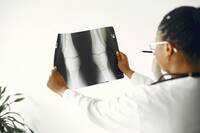Imagine lifting a heavy box and suddenly feeling a sharp pain in your shoulder. This scenario is all too common. It’s not just the athletes who suffer from shoulder issues—everyday activities like gardening, cleaning, or even sleeping in an awkward position can lead to shoulder problems. Understanding these injuries and their treatments can make a big difference in recovery.
Shoulder injuries are often overlooked until they become severe, causing discomfort and limiting mobility. This article aims to provide an overview of common shoulder injuries, their causes, symptoms, and available treatments. Whether you're dealing with a nagging pain or a sudden injury, this guide will help you navigate the path to recovery.
Understanding Shoulder Anatomy
The shoulder is a highly flexible joint, allowing for a wide range of motion, which unfortunately makes it susceptible to injuries. It comprises bones, muscles, tendons, and ligaments that work in unison to maintain stability and enable movement. The shoulder's intricate design facilitates various movements but also increases its vulnerability to different types of injuries.
Key components of the shoulder include the humerus (the upper arm bone), the scapula (the shoulder blade), and the clavicle (the collarbone). These structures are interconnected by muscles and tendons, forming a ball-and-socket joint that supports extensive movement. While this flexibility is advantageous, it also means the shoulder is at risk for injuries due to overuse, trauma, or incorrect movements.
(more…) While anterior cervical discectomy surgery has become a widely accepted and frequently performed procedure to relieve spinal cord or nerve root compression, it is not without potential risks and complications. These can range from common surgical risks, such as infection, to more procedure-specific complications like nerve damage, dural tears, and the possibility of recurrent disc herniation. As there is a critical need for increased awareness and understanding of these challenges, it is essential to engage in a thorough exploration of the potential outcomes and their management tactics.
While anterior cervical discectomy surgery has become a widely accepted and frequently performed procedure to relieve spinal cord or nerve root compression, it is not without potential risks and complications. These can range from common surgical risks, such as infection, to more procedure-specific complications like nerve damage, dural tears, and the possibility of recurrent disc herniation. As there is a critical need for increased awareness and understanding of these challenges, it is essential to engage in a thorough exploration of the potential outcomes and their management tactics.






